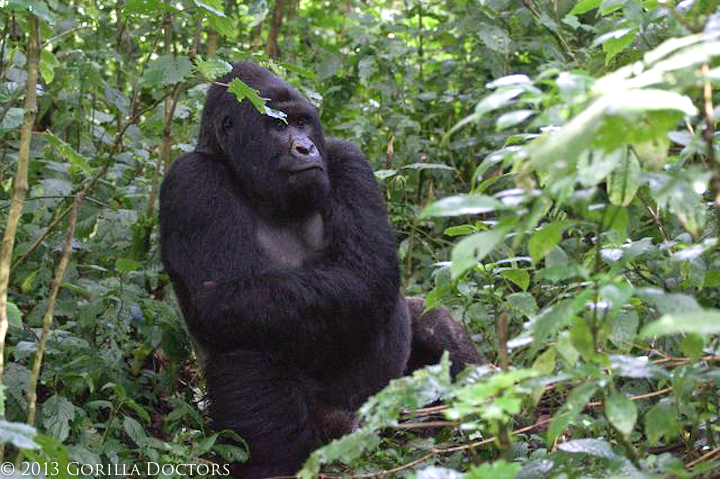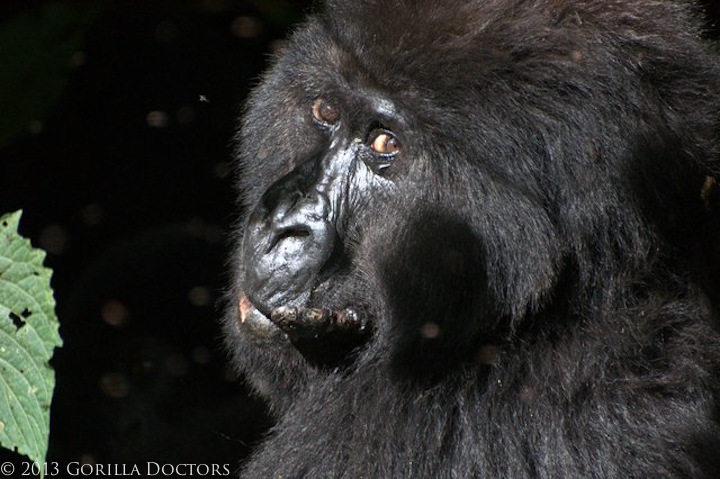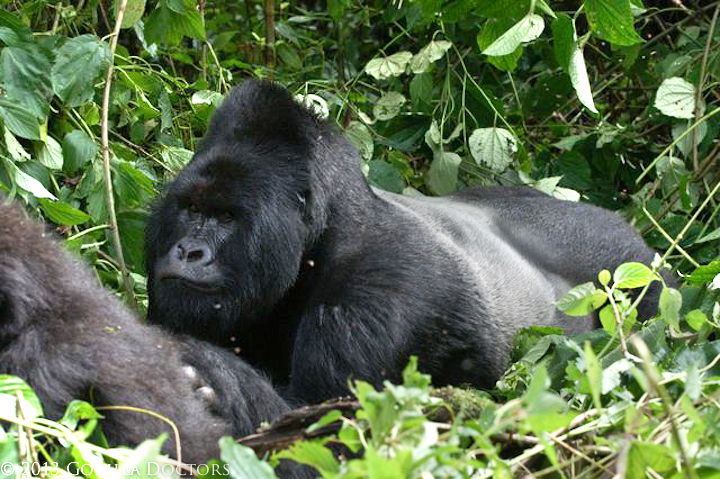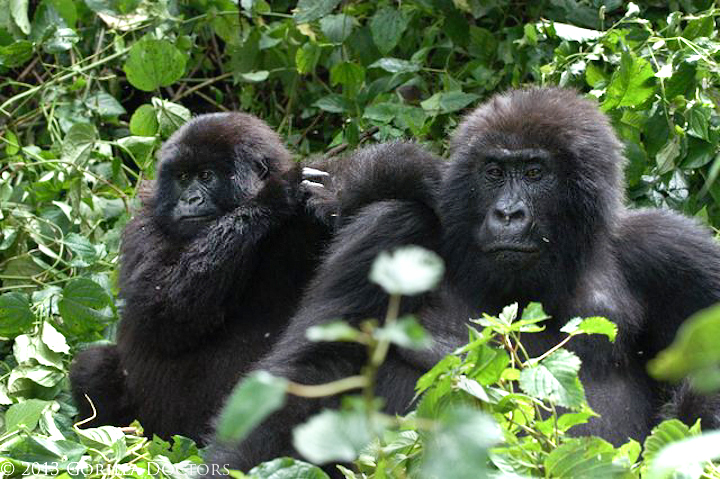Drs. Eddy and Martin Assess Mikeno Sector’s Humba Group
By Gorilla Doctors Staff on Friday, April 12th, 2013 in Blog.After 12 months of instability in the Mikeno Sector due to the occupation of the M23 rebel group in the gorilla’s habitat, the conflict seems to be coming to a close, allowing our veterinarians safer access to the mountain and Grauer’s gorillas in Virunga National Park, DRC. Dr. Eddy and Martin traveled from Goma to VNP last week to assess three mountain gorilla groups, Humba, Kabirizi and Munyaga. Here is his report:
Humba Group
On Wednesday, April 10, Dr. Martin and I performed a routine health check of the Mikeno Sectors’ Humba group. We were also interested in rechecking two gorillas, adult females Gashangi and Gato, who had previously exhibited a skin rash and eye problems.
We left the Bukima patrol post at 7:50am and entered the forest with two trackers, one ranger and the Bukima Patrol Post Monitoring Officer. At 8:29am, we reached the area where the trackers had left the group the previous day. After another 15 minutes of tracking, we located the group in the Rutamuriro area of the park. However, their night nests were never located.
Our team encountered dominant silverback Humba first. The old male was resting on the ground with two females and an infant. Around the dominant male, we counted 7 gorillas. Most were feeding on Urera and climbing high in the trees.
 Dominant silverback Humba
Dominant silverback Humba
Adult female Gashangi was among the little group resting, and her chronic skin rash on her upper lip was still present. The skin lesion appears to be growing slowly. She was observed feeding well, but was only using one side of her mouth when putting vegetation in it.
 Adult female Gashangi with a skin lesion on her upper lip.
Adult female Gashangi with a skin lesion on her upper lip.
While checking on the group, we found the second ranking silverback, Nyakamwe, resting with female Magori, subadult Kanyarunka and three other juveniles playing around on the ground. Trackers have reported that second ranking silverback Nyakamwe is beginning to challenge dominant silverback Humba and that Nyakamwe has come out on top in recent fights. Nyakamwe is young and strong and seems to be successfully managing a smaller subgroup at this time. We would not be surprised to find that this subgroup splinters off to become it’s own group in the future. Of course, it is still likely that Humba could one day chase the young silverback out of the group or that Nyakamwe would succeed in overtaking the older male and becoming the leader of the entire group.
 Second ranking silverback Nyakamwe
Second ranking silverback Nyakamwe Adult female Magori, resting with her offspring.
Adult female Magori, resting with her offspring.
Adult female Gato has had chronic eye discharge for some time now. She was observed feeding with her new infant. Her eyes appeared to be bright and clean compared to the observation of our previous visits.
During our observation, 17 gorillas were seen and all appeared to be in good health, with the exception of Gashangi’s skin lesion. We left the group at 10:35am when it began raining and the gorillas moved into thicker vegetation to feed.
You can follow the Gorilla Doctors health monitoring efforts on our Facebook page, where we post photos and notes from our monthly visits.
Please consider supporting us by making a secure online donation. Every dollar you give goes to directly supporting our gorilla health programs and One Health initiative. Thank you for your generosity.


 Donate
Donate